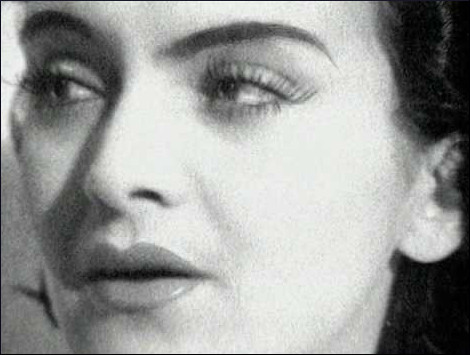
- Doina din Dolj
- Released in: 2013
“Doina din Dolj” is included in Maria Tanase's album Magic Bird. This song is a type of poem that takes up various subjects, most often sad but sometimes humorous.

“Doina din Dolj” is included in Maria Tanase's album Magic Bird. This song is a type of poem that takes up various subjects, most often sad but sometimes humorous.

Maria Tanase was a Romanian folk singer born in Bucharest in 1913. Hailed as the Edith Piaf of Romania, the expressivity of her intense alto voice and the creativity of her achingly beautiful songs celebrating Romanian folklore have turned her into a symbol of Romanian culture. Maria Tanase did not have any formal musical training, but her love for the authentic, well-preserved, rural Romania celebrated in old folklore songs motivated her to take up singing and persevere. Her repertoire includes music from different areas of the country. With her personal touch, she covered “cantece de jale” (sad, wailing songs), “cantece de nunta” (wedding songs), “cantece de leagan” (cradle songs), “doine” (yearning songs), “hore” (communal group dances), and “invartite” (round dances).
Since her folk songs originate from different regions in Romania, their language registers the dialects spoken in each area, which Maria particularly strived to retain in her interpretations. Her music documents the dialects, traditions, and ways of life of Romanians from places like Bucovina, Oltenia, Muntenia, and Transylvania.“Doina din Dolj” (Doina from Dolj County) is included in her album Magic Bird. The term “doina” cannot be translated into other languages, as there is no accurate equivalent, but it could be likened to a ballad. It is a type of poem which takes up various subjects, most often sad but sometimes humorous, and which can only be sung. “Doina from Dolj County” tells the story of a young woman whose “maicuta” – the archaic form of the word “mama” (mother) – has married her off to a wealthy man who is also “cel mai urat om din sat” (the ugliest man in the village). The song thus focuses on the theme of arranged marriage and the unhappiness that usually governs it.

The young woman humorously describes the feelings instilled in her by her husband every time he’s around her. We find out her heart “se strangea” (shrivels) and that she gets the “frigurile” (the shivers) every time she sees him coming towards her. She hates him so much that, after washing his shirt, she dries it on the fence and irons it under her feet. Thoroughly unhappy with her arranged marriage, she continually curses her husband, telling him to “arza-te-ar focul” (burn in hell). She claims her luck has left her because of his money and blames him for her wrinkles and creases: “Mi-ai ofilit fata.”
In a further attempt to spurn him and show her repulsion towards his buying her from her parents, she tells him she wishes he had spent his money on a “funie” (noose) instead. Had he hanged himself, she could have gotten married to a handsome poor man with whom she could have been happier: “Unul frumos si sarac/ Si sa fiu trait cu drag.” Fed up with her complaints, the man ends up effectively putting a noose around his neck. The song retains the linguistic features of the dialect spoken in Dolj County, located in the south-western part of Romania in the region of Oltenia.